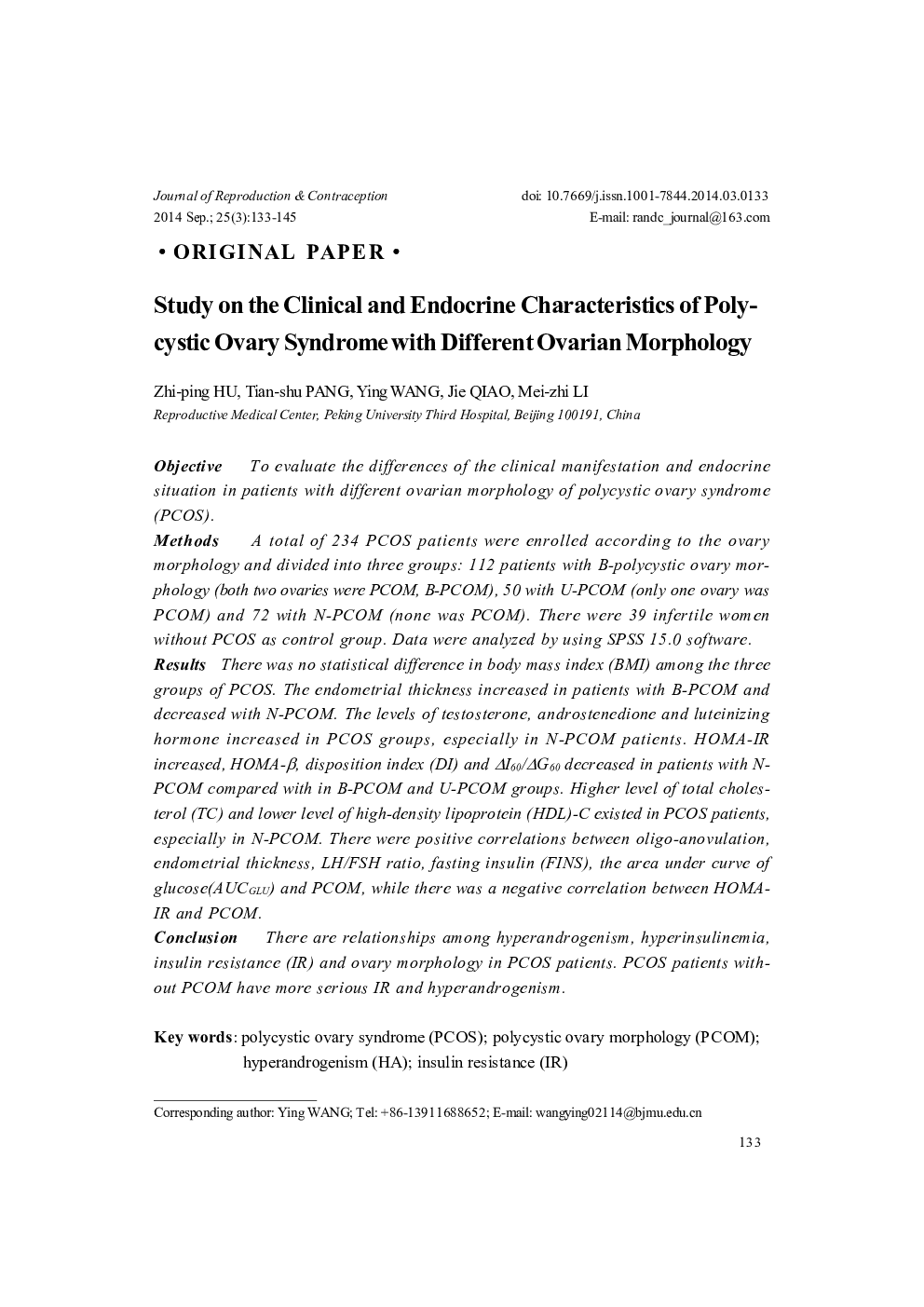| Article ID | Journal | Published Year | Pages | File Type |
|---|---|---|---|---|
| 3964218 | Journal of Reproduction and Contraception | 2014 | 13 Pages |
ObjectiveTo evaluate the differences of the clinical manifestation and endocrine situation in patients with different ovarian morphology of polycystic ovary syndrome (PCOS).MethodsA total of 234 PCOS patients were enrolled according to the ovary morphology and divided into three groups: 112 patients with B-polycystic ovary morphology (both two ovaries were PCOM, B-PCOM), 50 with U-PCOM (only one ovary was PCOM) and 72 with N-PCOM (none was PCOM). There were 39 infertile women without PCOS as control group. Data were analyzed by using SPSS 15.0 software.ResultsThere was no statistical difference in body mass index (BMI) among the three groups of PCOS. The endometrial thickness increased in patients with B-PCOM and decreased with N-PCOM. The levels of testosterone, androstenedione and luteinizing hormone increased in PCOS groups, especially in N-PCOM patients. HOMA-IR increased, HOMA-β, disposition index (DI) and ΔI60/ΔG60 decreased in patients with N-PCOM compared with in B-PCOM and U-PCOM groups. Higher level of total cholesterol (TC) and lower level of high-density lipoprotein (HDL)-C existed in PCOS patients, especially in N-PCOM. There were positive correlations between oligo-anovulation, endometrial thickness, LH/FSH ratio, fasting insulin (FINS), the area under curve of glucose(AUCGLU) and PCOM, while there was a negative correlation between HOMA-IR and PCOM.ConclusionThere are relationships among hyperandrogenism, hyperinsulinemia, insulin resistance (IR) and ovary morphology in PCOS patients. PCOS patients without PCOM have more serious IR and hyperandrogenism.
